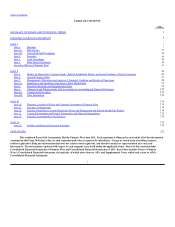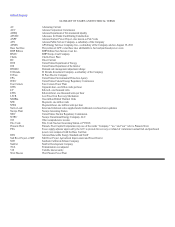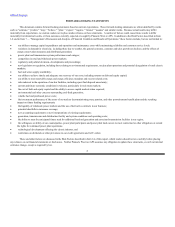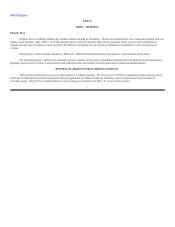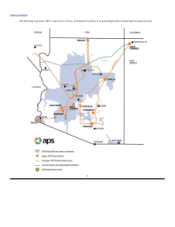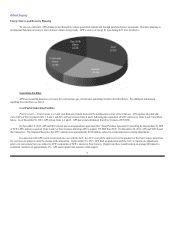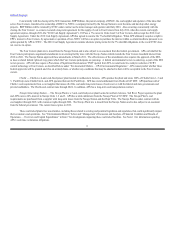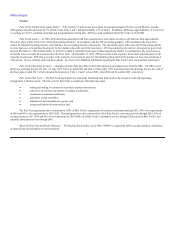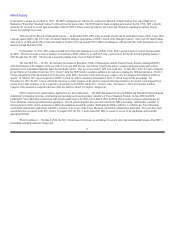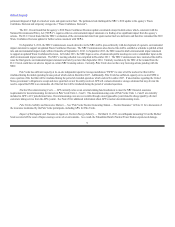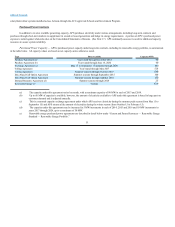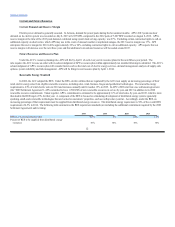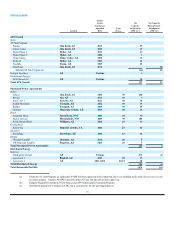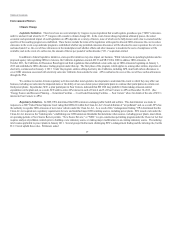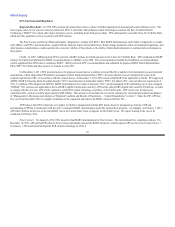APS 2013 Annual Report Download - page 12
Download and view the complete annual report
Please find page 12 of the 2013 APS annual report below. You can navigate through the pages in the report by either clicking on the pages listed below, or by using the keyword search tool below to find specific information within the annual report.
Table of Contents
permanent disposal of high level nuclear waste and spent nuclear fuel. The petitioners had challenged the NRC’s 2010 update to the agency’s Waste
Confidence Decision and temporary storage rule (“Waste Confidence Decision”).
The D.C. Circuit found that the agency’s 2010 Waste Confidence Decision update constituted a major federal action, which, consistent with the
National Environmental Policy Act (“NEPA”), requires either an environmental impact statement or a finding of no significant impact from the agency’s
actions. The D.C. Circuit found that the NRC’s evaluation of the environmental risks from spent nuclear fuel was deficient, and therefore remanded the 2010
Waste Confidence Decision update for further action consistent with NEPA.
On September 6, 2012, the NRC Commissioners issued a directive to the NRC staff to proceed directly with development of a generic environmental
impact statement to support an updated Waste Confidence Decision. The NRC Commissioners also directed the staff to establish a schedule to publish a final
rule and environmental impact study within 24 months of September 6, 2012. In September 2013, the NRC issued its draft environmental impact statement
to support an updated Waste Confidence Decision. In October 2013, the NRC began a series of nationwide public meetings to receive stakeholder input on the
draft environmental impact statement. The NRC’s meeting schedule was completed in December 2013. The NRC Commissioners have instructed the staff to
issue the final generic environmental impact statement and rule by no later than September 2014. Untimely resolution by the NRC of the remand from the
D.C. Circuit could have an adverse impact on certain NRC licensing actions. Currently, Palo Verde does not have any licensing actions pending with the
NRC.
Palo Verde has sufficient capacity at its on-site independent spent fuel storage installation (“ISFSI”) to store all of the nuclear fuel that will be
irradiated during the initial operating license period, which ends in December 2027. Additionally, Palo Verde has sufficient capacity at its on-site ISFSI to
store a portion of the fuel that will be irradiated during the period of extended operation, which ends in November 2047. If uncertainties regarding the United
States government’s obligation to accept and store spent fuel are not favorably resolved, APS will evaluate alternative storage solutions that may obviate the
need to expand the ISFSI to accommodate all of the fuel that will be irradiated during the period of extended operation.
Nuclear Decommissioning Costs — APS currently relies on an external sinking fund mechanism to meet the NRC financial assurance
requirements for decommissioning its interests in Palo Verde Units 1, 2 and 3. The decommissioning costs of Palo Verde Units 1, 2 and 3 are currently
included in APS’s ACC jurisdictional rates. Decommissioning costs are recoverable through a non-bypassable system benefits charge (paid by all retail
customers taking service from the APS system). See Note 20 for additional information about APS’s nuclear decommissioning trusts.
Palo Verde Liability and Insurance Matters — See “Palo Verde Nuclear Generating Station — Nuclear Insurance” in Note 11 for a discussion of
the insurance maintained by the Palo Verde participants, including APS, for Palo Verde.
Impact of Earthquake and Tsunami in Japan on Nuclear Energy Industry — On March 11, 2011, an earthquake measuring 9.0 on the Richter
Scale occurred off the coast of Japan causing a series of seven tsunamis. As a result, the Fukushima Daiichi Nuclear Power Station experienced damage.
9



